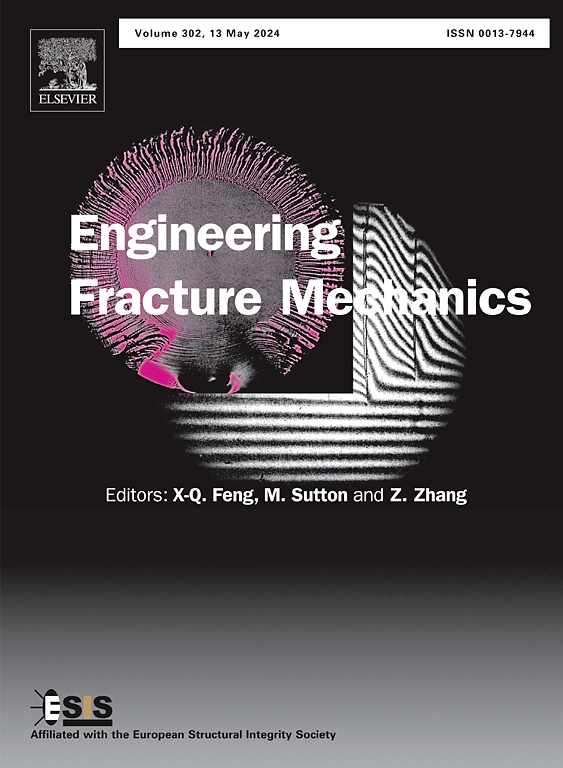Fracture characteristic of Mg-Gd-Y alloy in wide stress state: Experiment and modeling
IF 4.7
2区 工程技术
Q1 MECHANICS
引用次数: 0
Abstract
The stress state with the complex loading path substantially impacts the hardening and fracture behaviors of the magnesium-rare earth alloys, creating considerable difficulties for practical engineering implementation. To uncover the complicated deformation behavior from yield to fracture, this research carried out the mechanical experiments of an Mg-Gd-Y alloy under various loading conditions. A constitutive model is established, including the analytical Yoon2014 (A-Yoon2014) yield function, the modified Voce (M-Voce) hardening law and the two-component ductile fracture stress-based (2DFs) fracture criterion. Experimental results indicate that the mechanical strength is with the strain-dependent coupling effect of the anisotropic and strength-differential hardening. The A-Yoon2014+M-Voce model accurately captures the non-proportional evolution characteristic of the anisotropic-asymmetric hardening behavior, and simulates the deformation behavior of all fracture specimens to determine the fracture-related variables. The fracture stress is with a strong sensitivity to the loading path. The loading path-related fracture behavior at wide stress triaxiality is modeled by the 2DFs fracture criterion with a lower prediction error (0.212) than that (0.251) of the DF2016 stress-based fracture criterion. This work proposes a constitutive model from yield to fracture to provide the numerical guidance for the forming and application of magnesium-rare earth alloys.
Mg-Gd-Y合金宽应力状态下的断裂特性:实验与模拟
复杂加载路径下的应力状态严重影响镁稀土合金的硬化和断裂行为,给实际工程实施带来相当大的困难。为了揭示Mg-Gd-Y合金从屈服到断裂的复杂变形行为,本研究开展了Mg-Gd-Y合金在不同加载条件下的力学实验。建立了包含解析型Yoon2014 (A-Yoon2014)屈服函数、修正型Voce (M-Voce)硬化规律和基于双组分韧性断裂应力(2DFs)断裂准则的本构模型。试验结果表明,合金的机械强度具有各向异性和强度差硬化的应变耦合效应。A-Yoon2014+ m - voice模型准确捕捉了各向异性-非对称硬化行为的非比例演化特征,模拟了所有断裂试件的变形行为,确定了断裂相关变量。断裂应力对加载路径有很强的敏感性。宽应力三轴加载路径相关的断裂行为采用2df断裂准则建模,其预测误差(0.212)低于基于应力的DF2016断裂准则(0.251)。本文提出了从屈服到断裂的本构模型,为镁稀土合金的成形和应用提供了数值指导。
本文章由计算机程序翻译,如有差异,请以英文原文为准。
求助全文
约1分钟内获得全文
求助全文
来源期刊
CiteScore
8.70
自引率
13.00%
发文量
606
审稿时长
74 days
期刊介绍:
EFM covers a broad range of topics in fracture mechanics to be of interest and use to both researchers and practitioners. Contributions are welcome which address the fracture behavior of conventional engineering material systems as well as newly emerging material systems. Contributions on developments in the areas of mechanics and materials science strongly related to fracture mechanics are also welcome. Papers on fatigue are welcome if they treat the fatigue process using the methods of fracture mechanics.

 求助内容:
求助内容: 应助结果提醒方式:
应助结果提醒方式:


